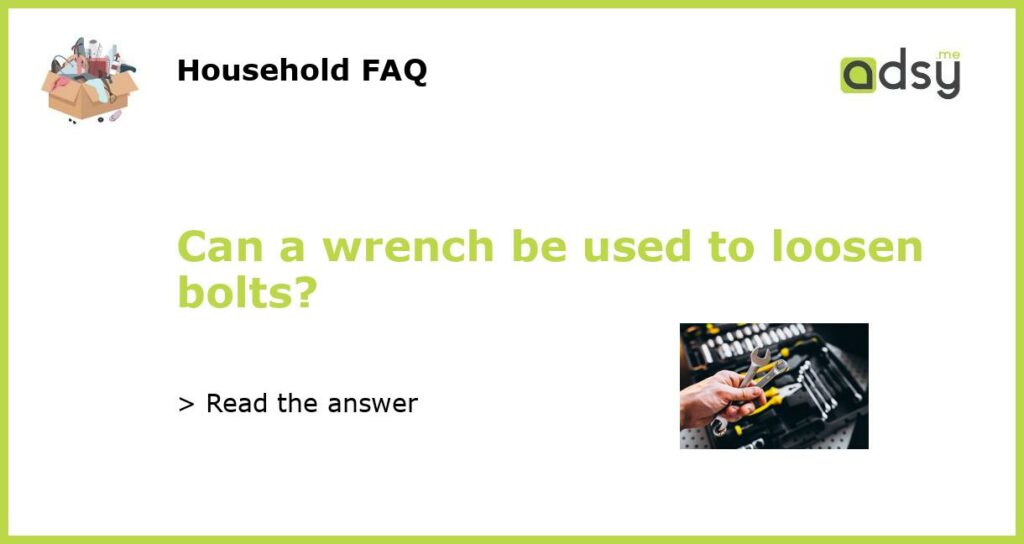Yes, a wrench can be used to loosen bolts
A wrench is a common tool used to tighten or loosen nuts, bolts, and other fasteners. It is designed with a handle and a metal head that fits over the fastener, allowing torque to be applied to turn it. While it is primarily known for tightening fasteners, a wrench can also be used to loosen bolts. In fact, loosening bolts is one of the main uses of a wrench.
Understanding the function of a wrench
A wrench is a mechanical tool that is used to apply torque to turn nuts, bolts, and other fasteners. It works by gripping the fastener and turning it with force, either clockwise to tighten it or counterclockwise to loosen it. The handle of the wrench provides leverage and allows the user to apply greater force than would be possible by hand alone.
There are several different types of wrenches, including adjustable wrenches, socket wrenches, open-ended wrenches, and combination wrenches. Each type of wrench is designed for specific applications and has its own unique features. However, they all serve the same basic function of tightening or loosening fasteners.
Using a wrench to loosen bolts
When you need to loosen a bolt, a wrench is an essential tool to have. To use a wrench to loosen a bolt, follow these steps:
- Choose the appropriate size wrench: Ensure that the size of the wrench matches the size of the bolt. Using a wrench that is too small or too large for the bolt can result in stripped or damaged threads.
- Position the wrench: Place the metal head of the wrench over the bolt, ensuring a secure fit.
- Apply force: Use the handle of the wrench to apply force in a counterclockwise direction. Start with gentle pressure and gradually increase the force as needed. If the bolt is particularly tight, you may need to use additional leverage, such as by using a cheater bar or an extension pipe over the handle of the wrench.
- Turn the bolt: Continue applying force in a counterclockwise direction until the bolt is sufficiently loosened. Once loosened, it can be further loosened by hand or completely removed using the wrench.
When a wrench may not be suitable
While a wrench is generally suitable for loosening most bolts, there are some situations where it may not be the best tool for the job. For example:
- Rusted or corroded bolts: If a bolt is rusted or corroded, it may be difficult to loosen with a regular wrench. In these cases, penetrating oil or rust dissolvers may be needed to help break down the rust and make it easier to loosen the bolt.
- Hard-to-reach bolts: In tight spaces or hard-to-reach areas, a wrench may be too large or awkward to use effectively. In these situations, a socket wrench or another specialized tool may be more suitable.
- Torque requirements: Some bolts may have specific torque requirements for tightening or loosening. In these cases, a torque wrench should be used to ensure the correct amount of force is applied.
In conclusion
A wrench is a versatile tool that can be used to both tighten and loosen bolts. It is a fundamental tool in many industries and is essential for any DIY project or mechanical repair. By following the proper techniques and using the right size wrench, you can effectively loosen bolts with ease.






